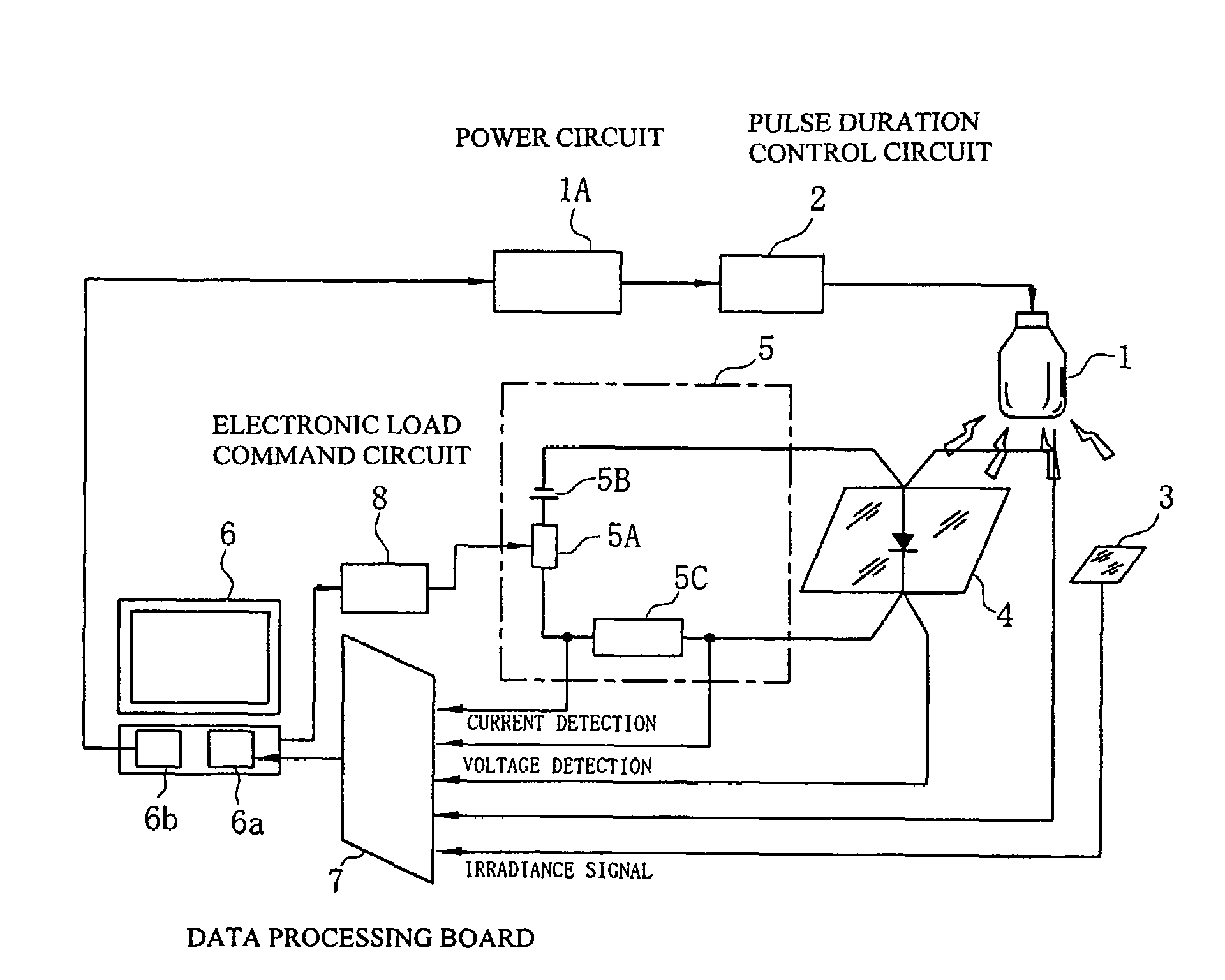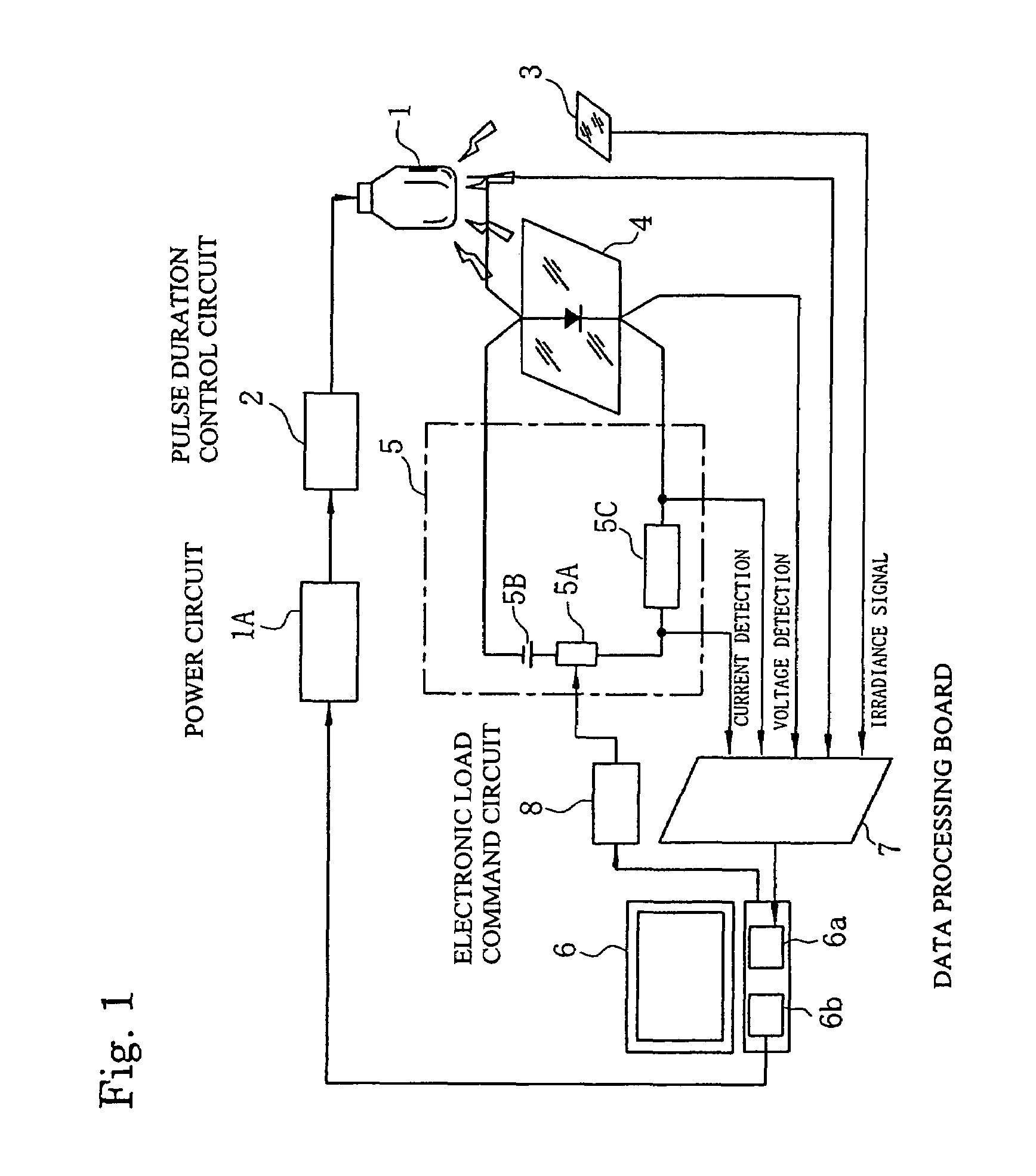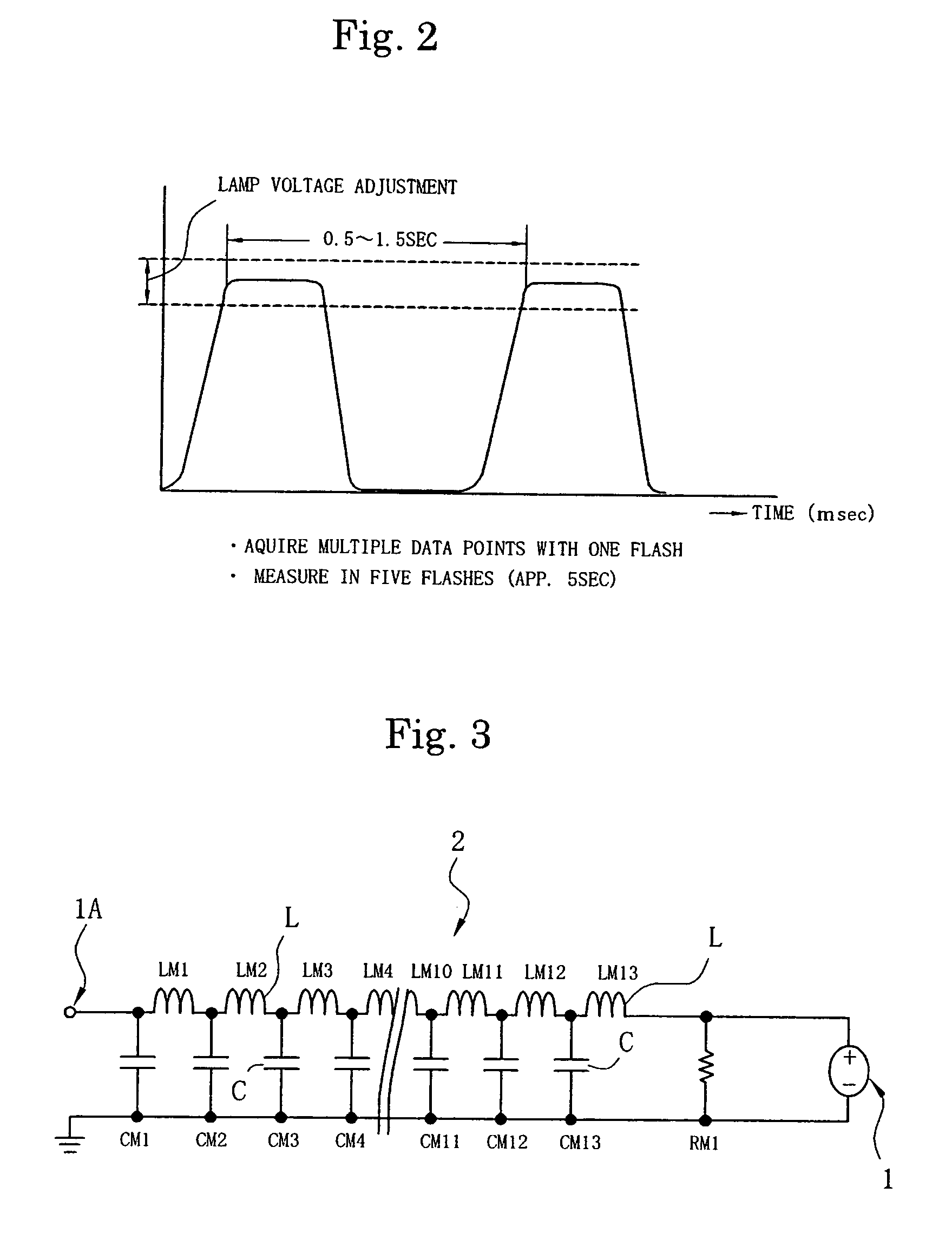Measurement method using solar simulator
a simulator and measurement method technology, applied in the direction of optical radiation measurement, individual semiconductor device testing, instruments, etc., can solve the problems of large scale equipment, large time required until measurement, and irradiance tends to decreas
- Summary
- Abstract
- Description
- Claims
- Application Information
AI Technical Summary
Benefits of technology
Problems solved by technology
Method used
Image
Examples
Embodiment Construction
[0050]Preferred embodiments of the present invention will now be described in detail, with reference to the accompanying drawings.
[0051]The present invention uses a middle flash, which has a pulse duration that is shorter than that of a single flash but longer than that of a short pulse flash. FIG. 1 is a block diagram showing one example of a solar simulator for implementing the measurement method of the present invention. FIG. 2 is a waveform diagram showing schematically an example of an irradiance waveform of a middle flash used in the measurement method of the present invention. FIG. 3 is a block diagram showing a pulse length control circuit, minus an intermediate part, using an LC circuit that generates a flash having a flattened part on the peak of the pulse waveform used in the present invention.
[0052]In the solar simulator shown in FIG. 1 employing the measurement method of the present invention, a pulse duration control circuit 2 (or a pulse duration delay circuit 2) usin...
PUM
 Login to View More
Login to View More Abstract
Description
Claims
Application Information
 Login to View More
Login to View More - R&D
- Intellectual Property
- Life Sciences
- Materials
- Tech Scout
- Unparalleled Data Quality
- Higher Quality Content
- 60% Fewer Hallucinations
Browse by: Latest US Patents, China's latest patents, Technical Efficacy Thesaurus, Application Domain, Technology Topic, Popular Technical Reports.
© 2025 PatSnap. All rights reserved.Legal|Privacy policy|Modern Slavery Act Transparency Statement|Sitemap|About US| Contact US: help@patsnap.com



